#new water
Explore tagged Tumblr posts
Text

I wonder?
Is "New Water" being produced by Nature every day?
and,
When did "Water" First come into existence in the Cosmos? ... William
#wonder#questions#answers#questions and answers#thoughts#my thoughts#new water#Cosmos#existence#australia#world#tumblr#nature#william#america#europe#asia
2 notes
·
View notes
Text
People against piracy fail to realize that no, I can’t just ‘buy it.’ They stopped making DVDs and Blu-Rays. They’re barely offering digital copies for download. I am not spending money I could use for food or bills to pay for a subscription service just so I can always have access to a beloved piece of media. Especially not when the service will remove media on a whim without concern for how the loss of access to that piece will make its artistic conservation nigh impossible.
For example, I recently learned that Disney+ had an original film called Crater. It’s scifi, family friendly, and seems cool - I would love to buy it as a holiday gift for my little brother! But: it’s exclusive to D+ and THEY REMOVED IT LITERALLY MONTHS AFTER ITS RELEASE.
The ONLY way I can directly access this film is through piracy. The ONLY available ‘copies’ of this film are hosted on piracy websites. Disney will NEVER release it in theaters, or as something to buy, and it may NEVER return to the streaming service. It will be LOST because we aren’t allowed to purchase it for personal viewing. If I can’t pay to own it, I won’t pay for the privilege of losing it when corporate decides to put it in a vault.
So yes, I’m going to pirate and support piracy.
Edit: if you are able, use $5 you would otherwise use for a streaming subscription to donate to a GazaFunds campaign.
#edit: go to https://gazafunds.org/ and donate $5 you would otherwise spend on streaming services on a campaign!#ra speaks#piracy#media piracy#pirate to make hondo ohnaka proud#obligatory ‘don’t fucking pirate small authors/artists works wtf dude’ statement.#anyone who’s seen my media bitching before knows I’m a hype man for indie films this ain’t about them#this is about corporate streaming services killing physical media bc sales numbers are less impressive than number of streams#edit: USAmericans stop telling me to buy DVDs and blurays at Walmart. think outside your borders for a hot sec. fun thought exercise.#your experiences are not universal#edit: WHO GOT THIS TO 100k. I JUST WANT TO TALK (this post is my second to hit 100k woahg.)#in other news: fix your fucking posture. drink some fucking water. and go the fuck to bed if it’s late bc it’s for me rn. peace and light.
135K notes
·
View notes
Text
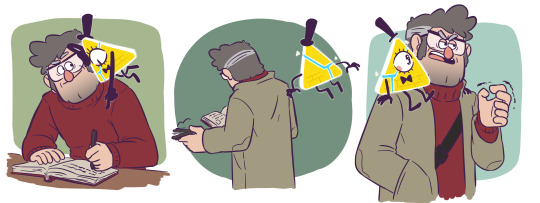
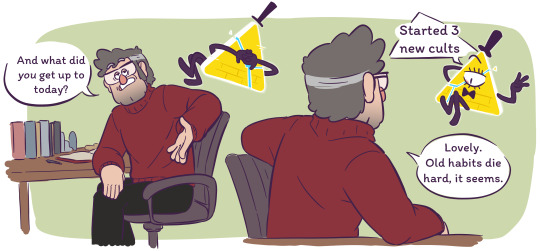
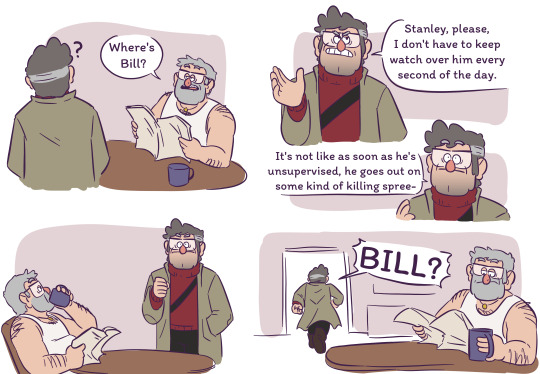
more people gotta try this shit where bill has not improved and will not change but he's just chilling so its fine probably. its great
#gravity falls#billford#bill cipher#stanford pines#gf nevermind all that#is this really for that? no but if its post canon bill on earth then it may as well be. makes it nice and easy to find later too#reread tbob because we just got our own (nicely water damaged) copy and i was like. i dont draw him cute enough#i will continue trying to do better#anyways stanley you are a butch woman. stanley transition now you dont even have to do anything youre already perfect#its just about the intent#every time i drew him for the last one all i could think was oohhhhhh my god you are a dyke. to me. please#in other news are there any burned out pushing-30s out there who havent drawn in years? i gotta say. i really gotta say.#get mentally ill about something its great. preferably alongside a few other people that you can use to create a perpetual cycle of insanit#gets you drawing again in no time and it feels great
10K notes
·
View notes
Text

oh what a joy it is to get to grow old
#one piece#trafalgar law#trafalgar d water law#woke up today with the urge to draw Law older (and happier)#it's very self indulgent but knowing that you survived this long and have still yet so much life ahead of you that is yours to shape#is a beautiful feeling#anyways hi everyone it's been a while since I posted new art here#my art
9K notes
·
View notes
Text
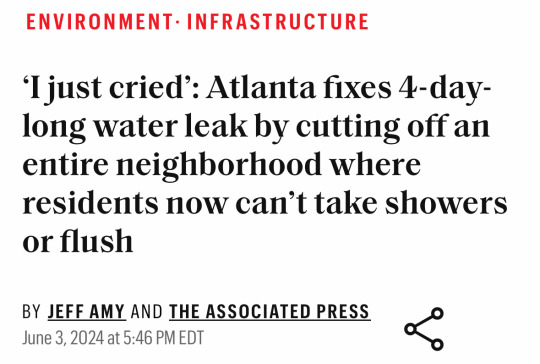
Source
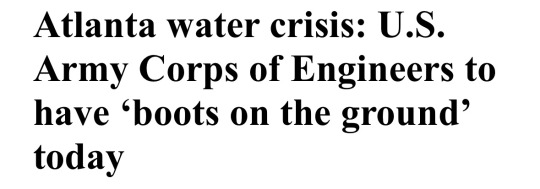
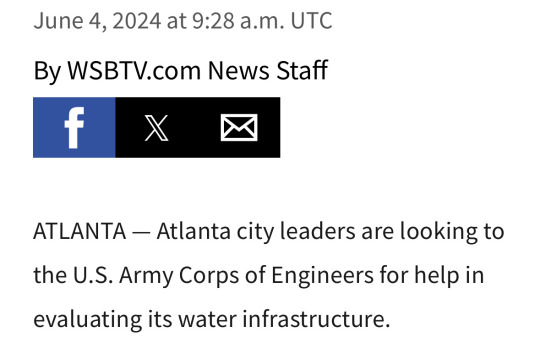
Source
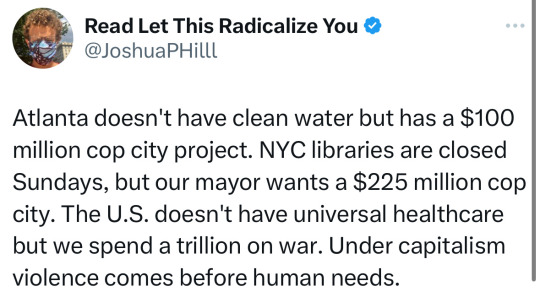
Source
#water#politics#the left#progressive#current events#news#Atlanta#capitalism#eat the rich#cop city#us politics#government
20K notes
·
View notes
Text
Maynilad’s New Ceramic UF Modular Treatment Plant in Muntinlupa City Inaugurated
Recently in the City of Muntinlupa, water concessionaire Maynilad inaugurated their modular treatment plant which was designed to treat raw water using state-of-the-art ceramic ultrafiltration (UF) technology, according to the official announcement. To put things in perspective, posted below is an excerpt from the company’s announcement online. Some parts in boldface… Operated under a…
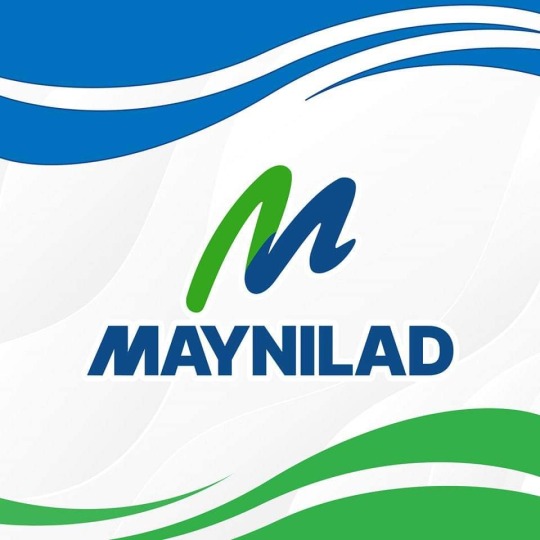
View On WordPress
#Alabang#Alabang blog#Asia#Blog#blogger#blogging#business#business news#Carlo Carrasco#Ceramic Flatsheet Membranes#City of Muntinlupa#drinking water#economics#economy#Economy of the Philippines#geek#Laguna Lake#Laguna Lake Modular Treatment Plant (ModTP)#Maynilad#Metro Manila#Muntinlupa#Nanobubble Technology#National Capital Region (NCR)#NCR#new water#news#Philippines#raw water#Rendco-FFJJ Consortium#Sludge Dewatering Press
0 notes
Text

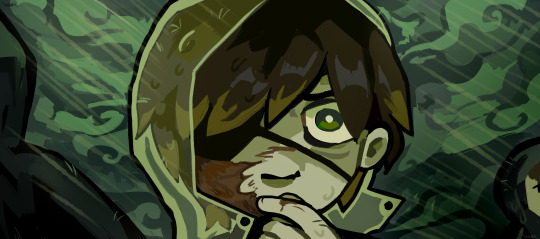
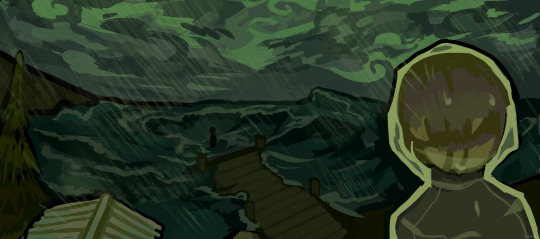
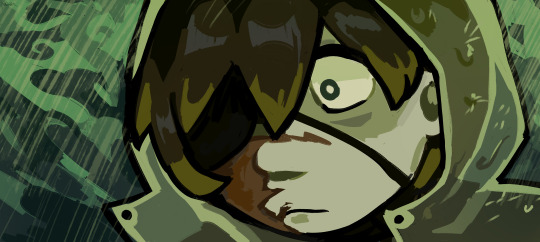
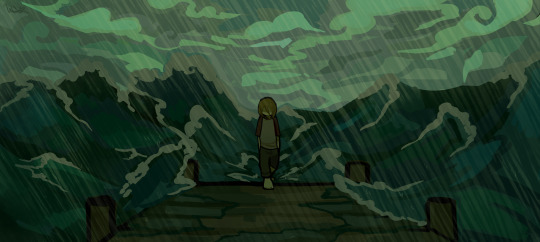

let the tide carry you home (next)
#wadds art#dream smp#part number ive lost count of my 'exile but tommy water powers' thingy thats not quite an au#moslty just a cool conceptt#tommyinnit#dsmp#tubbo#ctubbo#ctommy#clingy duo#clingyduo#tommyinnit fanart#tubbo fanart#new lmanburg#dsmp exile arc#dsmp new lmanburg#dsmp fanart
6K notes
·
View notes
Text


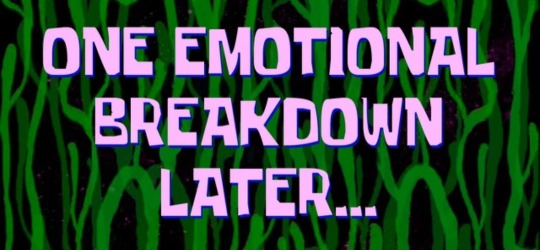

*pats Zuko's head* This bad boy can fit so many near-death experiences.
.
Read For the Spirits Chapter VIII here!
#atla#avatar the last airbender#zuko#atla fanart#prince zuko#atla art#new gods au#for the spirits#zuko's crew#Royal Guard Ming#atla ming#atla oc#(But not really cause she's a canon character)#spirit touched zuko#southern water tribe#atla fanfic#atla zuko#ponytail zuko#S1 Zuko has no chill#Is this a spoiler? I think it is but at the same time it isn't because we all knew this shit was going to happen.#I mean#Zuko + any of the Poles + blind determination = trauma#And at least ONE hanging-from-a-cliff experience#The spoiler would be telling you how he got there#So this is not a spoiler#This is BAIT#*insert evil cackle*#Look at my boy's face. He's so confident. He's so cocky. He's so “lmao wtf are you talking about I've got everything under control”#famous last words#*falls to the snow and dies*
4K notes
·
View notes
Text
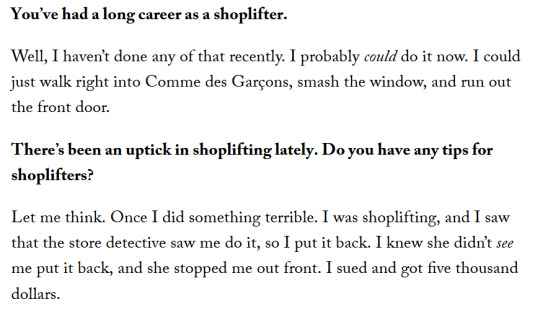
"John Waters Is Ready for His Hollywood Closeup", The New Yorker
29K notes
·
View notes
Text

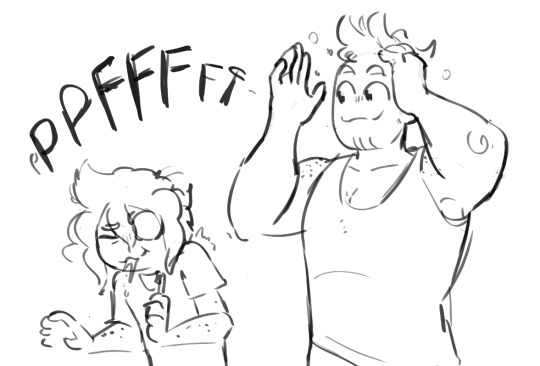
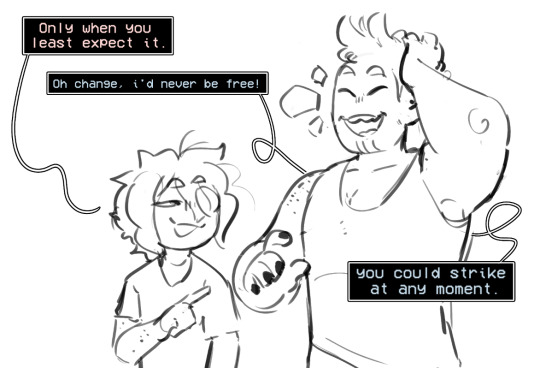
flirtng
#letting them be silly post loops#mild isat spoilers#isat#in stars and time#Siffrin#Isabeau#Isafrin#something something thinking of new things to say every morning so Siffrin has less doubts that they're still in a time loop#also flirting cause they're treading new waters
4K notes
·
View notes
Text
As relentless rains pounded LA, the city’s “sponge” infrastructure helped gather 8.6 billion gallons of water—enough to sustain over 100,000 households for a year.
Earlier this month, the future fell on Los Angeles. A long band of moisture in the sky, known as an atmospheric river, dumped 9 inches of rain on the city over three days—over half of what the city typically gets in a year. It’s the kind of extreme rainfall that’ll get ever more extreme as the planet warms.
The city’s water managers, though, were ready and waiting. Like other urban areas around the world, in recent years LA has been transforming into a “sponge city,” replacing impermeable surfaces, like concrete, with permeable ones, like dirt and plants. It has also built out “spreading grounds,” where water accumulates and soaks into the earth.
With traditional dams and all that newfangled spongy infrastructure, between February 4 and 7 the metropolis captured 8.6 billion gallons of stormwater, enough to provide water to 106,000 households for a year. For the rainy season in total, LA has accumulated 14.7 billion gallons.
Long reliant on snowmelt and river water piped in from afar, LA is on a quest to produce as much water as it can locally. “There's going to be a lot more rain and a lot less snow, which is going to alter the way we capture snowmelt and the aqueduct water,” says Art Castro, manager of watershed management at the Los Angeles Department of Water and Power. “Dams and spreading grounds are the workhorses of local stormwater capture for either flood protection or water supply.”
Centuries of urban-planning dogma dictates using gutters, sewers, and other infrastructure to funnel rainwater out of a metropolis as quickly as possible to prevent flooding. Given the increasingly catastrophic urban flooding seen around the world, though, that clearly isn’t working anymore, so now planners are finding clever ways to capture stormwater, treating it as an asset instead of a liability. “The problem of urban hydrology is caused by a thousand small cuts,” says Michael Kiparsky, director of the Wheeler Water Institute at UC Berkeley. “No one driveway or roof in and of itself causes massive alteration of the hydrologic cycle. But combine millions of them in one area and it does. Maybe we can solve that problem with a thousand Band-Aids.”
Or in this case, sponges. The trick to making a city more absorbent is to add more gardens and other green spaces that allow water to percolate into underlying aquifers—porous subterranean materials that can hold water—which a city can then draw from in times of need. Engineers are also greening up medians and roadside areas to soak up the water that’d normally rush off streets, into sewers, and eventually out to sea...
To exploit all that free water falling from the sky, the LADWP has carved out big patches of brown in the concrete jungle. Stormwater is piped into these spreading grounds and accumulates in dirt basins. That allows it to slowly soak into the underlying aquifer, which acts as a sort of natural underground tank that can hold 28 billion gallons of water.
During a storm, the city is also gathering water in dams, some of which it diverts into the spreading grounds. “After the storm comes by, and it's a bright sunny day, you’ll still see water being released into a channel and diverted into the spreading grounds,” says Castro. That way, water moves from a reservoir where it’s exposed to sunlight and evaporation, into an aquifer where it’s banked safely underground.
On a smaller scale, LADWP has been experimenting with turning parks into mini spreading grounds, diverting stormwater there to soak into subterranean cisterns or chambers. It’s also deploying green spaces along roadways, which have the additional benefit of mitigating flooding in a neighborhood: The less concrete and the more dirt and plants, the more the built environment can soak up stormwater like the actual environment naturally does.
As an added benefit, deploying more of these green spaces, along with urban gardens, improves the mental health of residents. Plants here also “sweat,” cooling the area and beating back the urban heat island effect—the tendency for concrete to absorb solar energy and slowly release it at night. By reducing summer temperatures, you improve the physical health of residents. “The more trees, the more shade, the less heat island effect,” says Castro. “Sometimes when it’s 90 degrees in the middle of summer, it could get up to 110 underneath a bus stop.”
LA’s far from alone in going spongy. Pittsburgh is also deploying more rain gardens, and where they absolutely must have a hard surface—sidewalks, parking lots, etc.—they’re using special concrete bricks that allow water to seep through. And a growing number of municipalities are scrutinizing properties and charging owners fees if they have excessive impermeable surfaces like pavement, thus incentivizing the switch to permeable surfaces like plots of native plants or urban gardens for producing more food locally.
So the old way of stormwater management isn’t just increasingly dangerous and ineffective as the planet warms and storms get more intense—it stands in the way of a more beautiful, less sweltering, more sustainable urban landscape. LA, of all places, is showing the world there’s a better way.
-via Wired, February 19, 2024
#california#los angeles#water#rainfall#extreme weather#rain#atmospheric science#meteorology#infrastructure#green infrastructure#climate change#climate action#climate resilient#climate emergency#urban#urban landscape#flooding#flood warning#natural disasters#environmental news#climate news#good news#hope#solarpunk#hopepunk#ecopunk#sustainability#urban planning#city planning#urbanism
14K notes
·
View notes
Text
currently obsessed with the idea of everyone viewing percy as a forced to never be messed with. for the sea is unpredictable and does not like to be restrained and all that jazz. except, frank and hazel. who only see him as just a little guy. a soldier left to his own devices out on the streets with nothing to comfort him but a panda pillow pet and a lingering memory of a girl he loves. he's just a little guy you guys.
#“somebody oughta get this child a fresh set of clothes and a hug.”#“somebody oughta get this child a warm pudding cup and a blue blanket.”#“somebody ought buy this child a new pillow pet to cuddle to sleep and protect him from nightmares.”#and the child in question is a six-foot seasoned war veteran who has saved the world twice before he was sixteen#percy jackon and the olympians#pjo text post#pjo#heroes of olympus#hoo text posts#hoo#percy jackson#frank zhang#hazel levesque#*percy crushing a monster to death using the water up ahead to mimic his hand movements*#*everyone watching in awe and horror*#frank: he just misses his mom and girlfriend you guys#hazel: yeah he's just a little guy
6K notes
·
View notes
Text
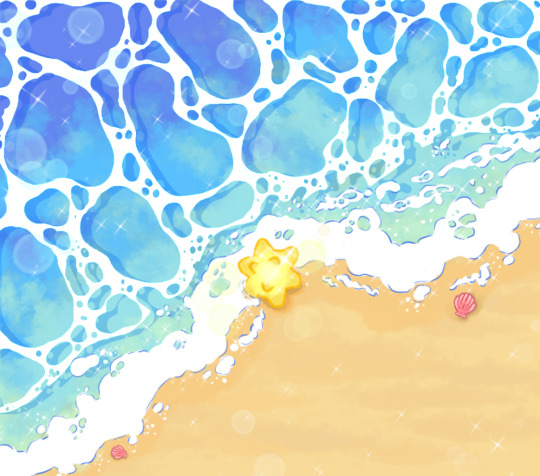
star fragment beach
#cute#kawaii#fanart#art#digital art#medibang paint#star fragment#animal crossing#animal crossing fanart#acnh#animal crossing new horizons#beach#ocean#water#summer
27K notes
·
View notes
Text

Zukka once again, this time with a time lapse as well.
Guys give me two minutes to figure out Tumblr and I'll be flying
#zukka#zuko x sokka#sokka#zuko#prince zuko#sokka fanart#zuko fanart#avatar fanart#avatar the last airbender#atla#atla fanart#atla sokka#digital illustration#artwork#digital art#art#avatar#water tribe#fire nation#speedpaint#this might be my favorite#bear with me as I'm trying to figure out Tumblr#yes I'm new to this#BEAR WITH ME#digital painting#illustration#portrait#zukka fanart
2K notes
·
View notes
Text

Ever think about how Bill Cipher has canonically threatened every member of the Pines family, except Stanley, with suicide? I think about that a lot... Kid's show villain everyone!
Individual Panels below the cut!






#I'm not forgetting something am I??? In Journal 3 he threatens to throw Dipper off the water tower and tells Mabel to join him and#in Bob he threatens Ford with the snowy roof and the frozen lake phone call. But like.. He hasn't done anything like that to Stanley iirc??#Tho we ARE two for two on Gravity Falls books giving us a new Bill suicide threat. So maybe the next book will give Stanley one??#And To be clear I dont think Stanley is suicidal. But a man with THAT life and THAT many guns in his house gotta have a bit of ideation yk#tw suicide ideation#tw suicide mention#Gravity Falls#GF Fanart#Fan art#Mabel Pines#Stanford Pines#Young Stanford Pines#Ford Pines#Grunkle Stan#Stanley Pines#Stan Pines#Bill Cipher#Dipper Pines#Comic#Gravity Falls Comic#fanart#Book Of Bill#Journal 3#Artists on Tumblr#My art
2K notes
·
View notes